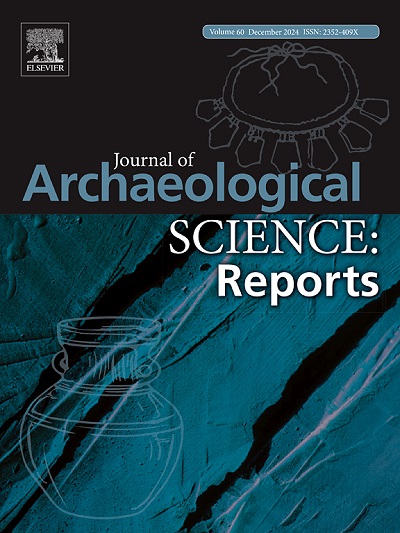根据铅同位素分析确定黑山里桑和里杰阿尼地区铅物的来源
IF 1.5
2区 历史学
0 ARCHAEOLOGY
引用次数: 0
摘要
原料来源的确定是考古研究的一个重要方面。本研究试图确定公元前3世纪至中世纪期间居住在科托尔湾及其周边地区的社区用于生产铅制品的铅矿的来源。这些物品来自里桑和里杰本文章由计算机程序翻译,如有差异,请以英文原文为准。
Determination of the origin of lead objects from Risan and Riječani (Montenegro) based on lead isotope analysis
The determination of the origin of raw material is an important aspect of archaeological research. This study attempts to identify the sources of lead ores used to produce lead objects by communities inhabiting the Bay of Kotor and its surroundings between 3 BC and the Middle Ages. The objects come from archaeological sites in Risan and Riječani (Montenegro). Samples were taken from joints of columns and pedestals. One sample was identified as probably recycled, indicated by a significantly increased Sn content. Pb isotopes were measured and the results were compared with literature data for Roman mines from the areas of present-day Algeria, Austria, Bosnia and Herzegovina, Bulgaria, Cyprus, Egypt, France, Germany, Greece, Israel, Italy, Montenegro, Morocco, North Macedonia, Portugal, Romania, Spain, Serbia, Tunisia and Turkey. The results indicate the use of mainly Greek and/or Serbian or Bulgarian deposits. However, a good match to the North Macedonia deposits is also visible. There are also matches to individual deposits from Italy, Romania, Turkey and Tunisia. However, these directions seem less promising due to the long transport and the availability of closerdeposits.
求助全文
通过发布文献求助,成功后即可免费获取论文全文。
去求助
来源期刊

Journal of Archaeological Science-Reports
ARCHAEOLOGY-
CiteScore
3.10
自引率
12.50%
发文量
405
期刊介绍:
Journal of Archaeological Science: Reports is aimed at archaeologists and scientists engaged with the application of scientific techniques and methodologies to all areas of archaeology. The journal focuses on the results of the application of scientific methods to archaeological problems and debates. It will provide a forum for reviews and scientific debate of issues in scientific archaeology and their impact in the wider subject. Journal of Archaeological Science: Reports will publish papers of excellent archaeological science, with regional or wider interest. This will include case studies, reviews and short papers where an established scientific technique sheds light on archaeological questions and debates.
 求助内容:
求助内容: 应助结果提醒方式:
应助结果提醒方式:


